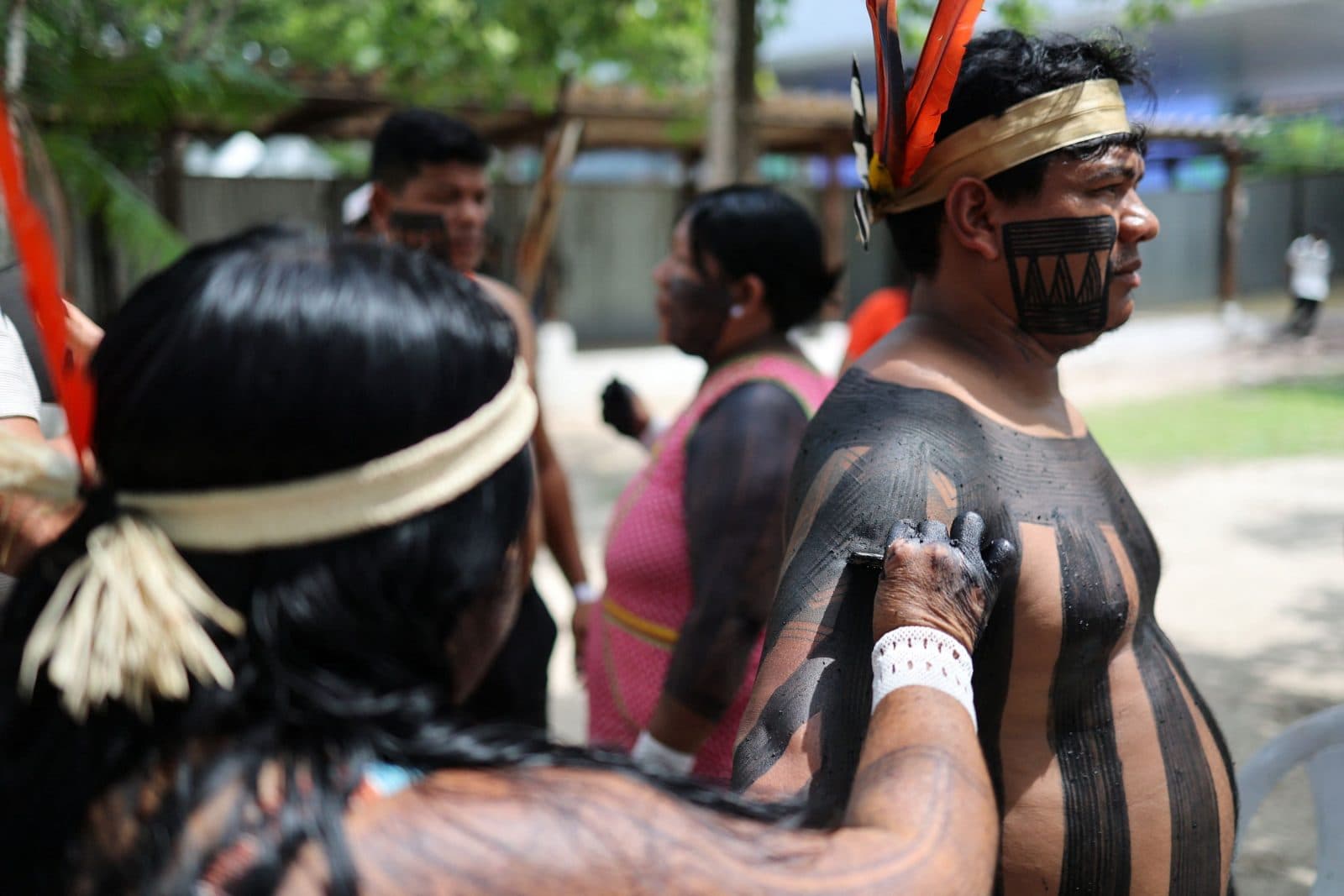For the first time, the traditional headdress of indigenous peoples took its place among the suits and ties at COP30, which began on Monday in Brazil, where indigenous communities are expected to have a particularly significant participation, something that has never happened before at a UN Climate Conference.
The survival of these populations and the demarcation of their territories are considered by scientists to be crucial elements for the protection of the environment and especially forests, contributing decisively to the fight against global warming. The first Conference to be held within the Amazon offers the ideal opportunity to highlight their role.
The Brazilian government has organized a series of initiatives to ensure that indigenous peoples have a meaningful presence at COP30, including the participation of more than three thousand people – a record number. Of these, around a thousand will directly participate in the official negotiations in the so-called Blue Zone, while the remaining two thousand are already in the Green Zone, where civil society organizations and observers are active.
In an exclusive interview with Euronews, the Minister for Indigenous Peoples, Sonia Guazazara, stressed the importance of the participation of these communities in political decisions and international forums.
The discussion is about solutions to mitigate the climate crisis. Indigenous lands and peoples have proven to be the greatest contributors to the preservation of biodiversity and forests and contribute substantially to the climate balance through their way of life. We cannot seek solutions without taking into account those who protect the environment and are already directly affected by the climate crisis, the minister said.
Brazil's proposal: Tropical Forest Fund
Brazil's central proposal at this year's Conference is the creation of a Tropical Forest Fund (TFFF). According to the plan, 20% of the resources will be directed to indigenous peoples. The goal is to raise $125 billion, of which $100 billion will come from private financing and the rest from government contributions and philanthropy. So far, the largest contribution has come from Norway, which has allocated $3 billion.
The People's Circle and the COP Village
The Green Zone is home to the Peoples' Circle Pavilion, set up by the International Indigenous Committee under the leadership of Sonia Guazazara and the Committee of Traditional Communities, Afro-descendants and Family Agriculture, coordinated by the Minister of Racial Equality, Aniel Franco. It hosts actions and discussions on the experience of these groups in the fight against the climate crisis.
To accommodate the thousands of indigenous people participating in the Conference, the COP Village has been created, a central accommodation space within a university complex, designed to facilitate dialogue and collaboration. The National Service for Indigenous Peoples (FUNAI) has also created the Biodiversity Space, where indigenous producers showcase and market their products. At the same time, FUNAI is organizing the Echoes of the Earth Film Festival at the Museum of Image and Sound in Belém, with more than 30 screenings dedicated to indigenous peoples.
The voice of the people must reach decision-making
The key challenge is for countries and world leaders to understand the central role of indigenous participation in decision-making, Guazazara argued. At this year’s COP, we are working to ensure that indigenous peoples have a direct impact on both the negotiations and the broader agenda, to enhance awareness and understanding of the contribution of indigenous territories, which is often not recognized by the institutional structures of international conferences.
Training young indigenous leaders
In preparation for the Conference, the government implemented the Kuntari Katu training programme – in the Nhengatú language it means one who speaks for and on behalf of the people. The programme included language training and practice in the COP negotiation processes. In parallel, the COP Parente cycle held a series of events in various states, informing indigenous communities about the functioning of the COP and selecting their representatives.
The influence of the Green Belt
The executive director of the Amazon Environmental Research Institute (IPAM), André Guimarães, points out that the presence of indigenous people in the Green Zone acts as a catalyst for official negotiations.
During the Conference, negotiators are influenced by what happens outside the halls: demonstrations, demands from indigenous communities, actions by young people and organized civil society. This presence is crucial, because these peoples are fundamental to the preservation of the climate and natural resources and at the same time the most vulnerable to the effects of climate change, he explained. Our presence in Belém is both symbolic and practical: it shows that Brazil is a democratic, open country that respects differences and that the voice of these communities must be integrated into decision-making processes.
Evidence confirming the role of indigenous peoples
In Brazil, indigenous lands cover approximately 105 million hectares, or 13.8% of the territory, and contribute directly to environmental protection. In 2024, they accounted for just 1.3% of the country's total deforestation.
Experts point out that this protection is due to the sustainable relationship of indigenous peoples with ecosystems, which acts as a real safety net for nature.
Since 2023, with the start of the current term of President Luiz Inácio Lula da Silva, the government has recognized 16 new indigenous territories. The creation of the Ministry of Indigenous Peoples, a key campaign promise of Lula, was an important institutional step, with Sonia Guazazara taking over its leadership due to her recognized action in favor of indigenous rights.

